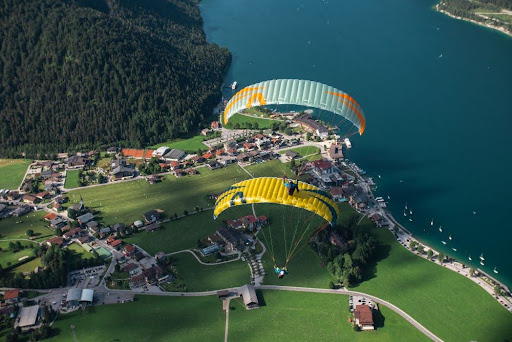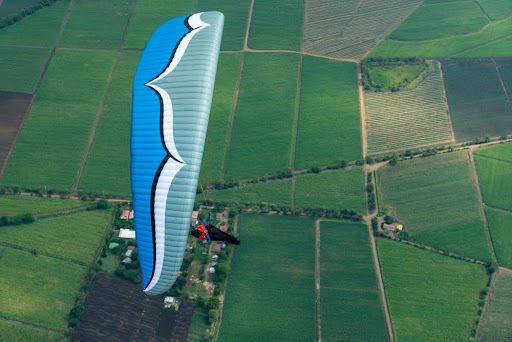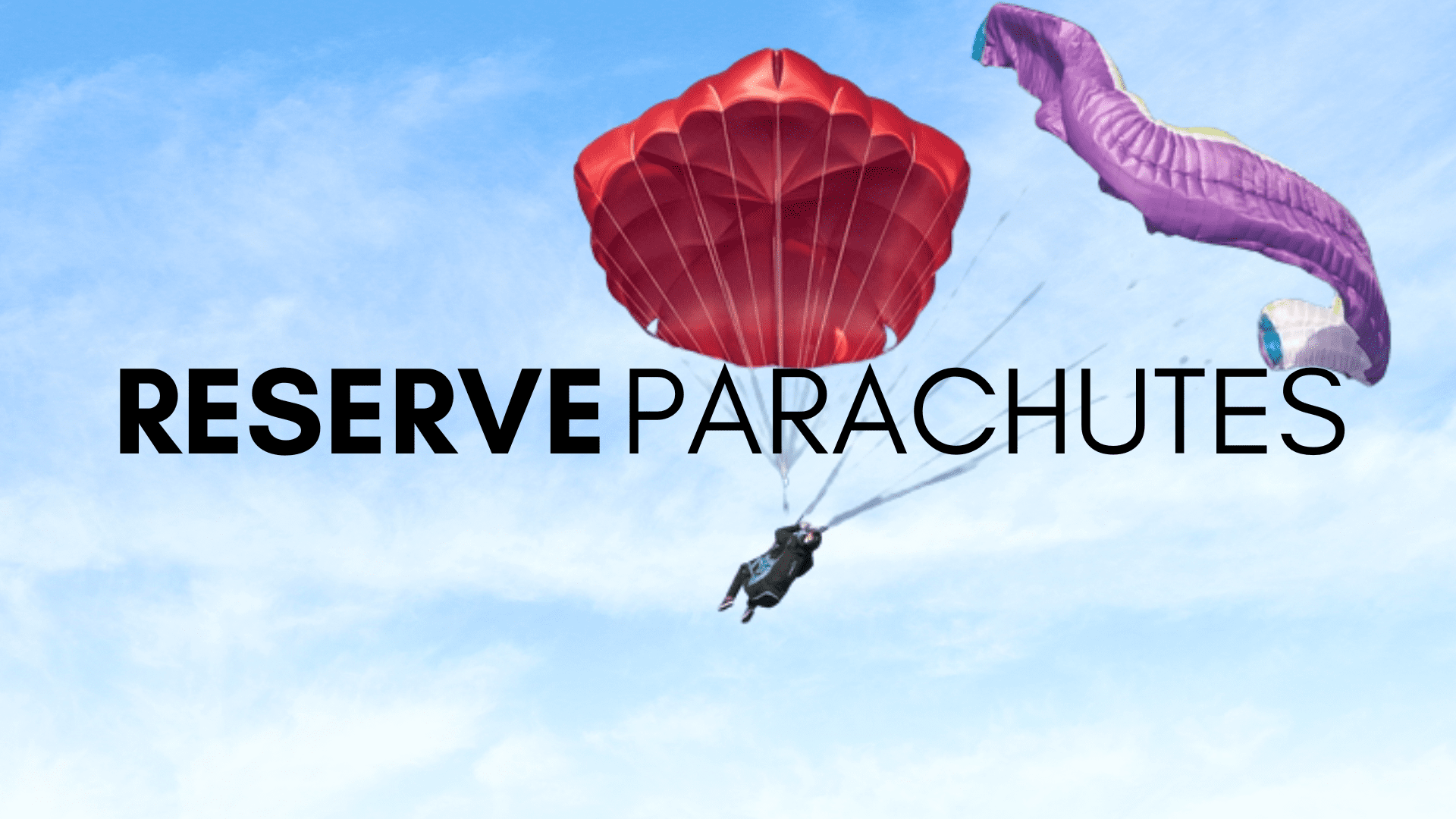
How Much Does a Paraglider Cost? A Realistic Breakdown for Every Budget
How Much Does a Paraglider Cost? A Realistic Breakdown for Every Budget Are you dreaming of taking off with nothing

As you sit on the beach and look to the sky, you might catch someone passing by for a glide and think to yourself: “Wow – that looks insane – but kinda fun too”?
You are correct. Paragliding has that perfect mix of freedom and fear that can make an onlooker pause. You might start to wonder—”how safe is paragliding today?” followed by the typical questions: do people still crash? Has the gear gotten better? Just how safe IS this crazy exhilarating sport?
One thing’s for sure: simply strapping in and hoping for the best is sure to be a recipe for disaster! There are a tons of things that go into keeping things smooth sailing there. Flying suspended in the air is always going to come with a little risk! But still – people do it every day and walk away with huge grins. Will you be one of them?
Let’s break it all down for the people who have been eyeing the skies lately to see just how feasible it really is for a beginner, and just what the risks are!
Taking a full dive into the sport and flying through the sky with nothing but fabric and strings sounds a little crazy and even daunting to a newbie. But that’s part of what makes paragliding so exciting and thrilling! One question always seems to consistently surface for newcomers: how safe is paragliding?
The honest answer? It’s actually a lot safer than it looks—if done right. Like with any adventure sport, there are going to be some risks. But they’re in all honestly manageable to mitigate. In reality, most accidents in this sport don’t just “happen.” They usually come from either poor judgment, skipping training, or even using dodgy gear.
So yes, paragliding certainly isn’t a free-for-all. But with proper training and a good understanding of your limits, you’ll be in for the ride of your life (both amazing and safe).
Let’s get into the nitty-gritty and talk about the actual paragliding accident statistics. Numbers can vary depending on where and how people fly, but here’s the truth: the majority of incidents are due to pilot error.
Some examples of pilot error:
These are prime examples of when things can start to go sideways in the sky. So, is paragliding dangerous? It can be, but not if you fly smart.
Before you even begin to think about shopping for wings and helmets, first thing is first: sign up for lessons. A certified school isn’t just for beginners—it’s your foundation. Even if you haven’t paraglided in a few years but were an expert before, we recommend brushing up on your training with a certified instructor.
Why? Because you’ll learn how to launch, fly, and land safely. You’ll get to test out different wings and harnesses that may have new technology or advancements (always handy to try before you buy). You’ll get honest advice about paragliding safety gear that suits your level. Training doesn’t just boost confidence. It saves lives.
If you’re wondering what exactly paragliding is—picture this: no motor, no cockpit, just a fabric wing and a harness. You launch on foot, ride the wind, and steer with brake toggles and weight shifts. Simple gear. Big adventure.
But don’t let the minimalist setup fool you. The risks of paragliding are very real. You need to respect the weather, as you do your own limits (and not to mention, the standard rules of the sky).
In the U.S., how safe is paragliding also depends on if you are following FAA’s Part 103 rules. No license needed, but airspace laws still apply.
Most pilots go through USHPA to get certified—it’s not mandatory, but it’s smart. If you’re flying abroad for example, some countries might require a special license or insurance.
And please — don’t be the reason a flying site shuts down (this can happen in some regions and it’s no fun for other paragliders with trips planned for their paragliding season)! Local volunteers work hard to keep these areas open. Always talk to the club before flying, especially if you’re visiting. They’ll fill you in on everything from weather quirks to restricted zones.
Your equipment can really make or break your safety. Every single flight depends on how well you’ve maintained your gear.
Here’s what you’re going to need:
Always be sure to check for tears, twisted lines, and frayed straps. Got doubts? Don’t fly.
When people ask “is paragliding dangerous,” they usually forget to factor in weather. And that’s the sneakiest, most roll of the dice part about paragliding (if you’ve done everything else right). Why? Because one moment it’s calm—and the next thing you know, a huge gust can knocks you off balance if you aren’t prepared with the right wing setup for your skill level and training.
Here’s what to watch out for:
If you’re serious about flying, be sure to get the book Understanding the Sky. It’s basically the paragliding weather bible.
Want to ease into things? Go for a tandem flight or a guided session. You’ll get coaching mid-air, on-the-spot decision-making help, and someone watching your back.
Even after you’re certified, flying with veterans helps you avoid rookie mistakes. Local clubs are great for building your skills and your confidence.
We get this one a lot. How safe is paragliding when you look at the numbers?
While there’s no worldwide database, most paragliding accident statistics point to the same thing: pilots pushing too hard, too fast. Advanced maneuvers without experience. Bad weather calls. Or skipping pre-flight checks.
Serious injuries are rare if you stick to the basics. Beginners who follow paragliding safety tips and don’t try to be heroes? They usually have a blast with zero issues.
It can be—but only if you’re careful. Cheap gear might save you cash, but it could cost you way more later. Before buying, ask:
If the seller can’t give you a certified inspection report, walk away. No wing is worth risking your life over.
In the end, how safe is paragliding truly depends on your decisions. With the right training, smart planning, and proper gear, it’s one of the most freeing—and yes, safe—adventure sports out there.
Join our newsletter and we’ll send you beginner tips, expert gear guides, and real-world flying advice—straight to your inbox. Scroll to the bottom of our homepage and sign up today.
Remember: Fly safe. Fly smart. Fly free!
Paragliding carries some risk like any adventure sport. Proper training and a combination of the right gear and good decision-making easily negates the risks.
Paragliding accidents are relatively rare and usually linked to pilot error. Most issues happen when people fly in bad weather or go beyond their skill level.
It is as long as beginners learn through a certified school. Starting with lessons and using inspected gear makes a huge difference.
Wing collapses, bad weather, poor landings, or equipment failure can cause problems. Most of these are avoidable with caution and prep.
Paragliding can be pricey to start, weather-dependent, and physically demanding. It also involves a learning curve, and if you skip proper training, the risks go way up. Plus, travel to flyable locations can be time-consuming if you don’t live near a launch site.

How Much Does a Paraglider Cost? A Realistic Breakdown for Every Budget Are you dreaming of taking off with nothing

Choosing the Right Reserve Parachute: A Comprehensive Guide Paragliding is an absolutely amazing experience! It is an exhilarating sport that

Paragliding — an adventure not like any other. In this sport, you aren’t just tested physically; you master your body,
No account yet?
Create an Account